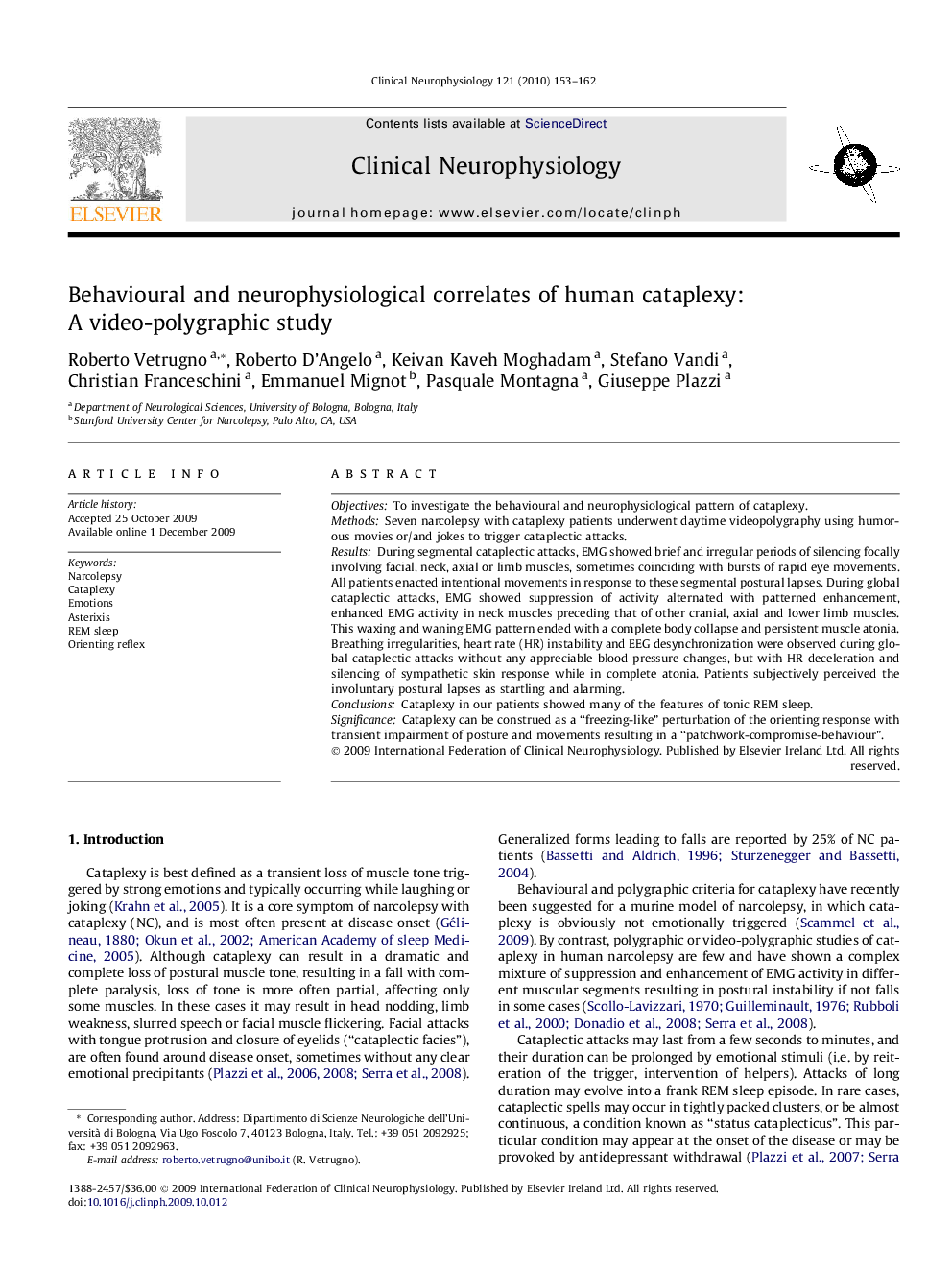| Article ID | Journal | Published Year | Pages | File Type |
|---|---|---|---|---|
| 3045317 | Clinical Neurophysiology | 2010 | 10 Pages |
ObjectivesTo investigate the behavioural and neurophysiological pattern of cataplexy.MethodsSeven narcolepsy with cataplexy patients underwent daytime videopolygraphy using humorous movies or/and jokes to trigger cataplectic attacks.ResultsDuring segmental cataplectic attacks, EMG showed brief and irregular periods of silencing focally involving facial, neck, axial or limb muscles, sometimes coinciding with bursts of rapid eye movements. All patients enacted intentional movements in response to these segmental postural lapses. During global cataplectic attacks, EMG showed suppression of activity alternated with patterned enhancement, enhanced EMG activity in neck muscles preceding that of other cranial, axial and lower limb muscles. This waxing and waning EMG pattern ended with a complete body collapse and persistent muscle atonia. Breathing irregularities, heart rate (HR) instability and EEG desynchronization were observed during global cataplectic attacks without any appreciable blood pressure changes, but with HR deceleration and silencing of sympathetic skin response while in complete atonia. Patients subjectively perceived the involuntary postural lapses as startling and alarming.ConclusionsCataplexy in our patients showed many of the features of tonic REM sleep.SignificanceCataplexy can be construed as a “freezing-like” perturbation of the orienting response with transient impairment of posture and movements resulting in a “patchwork-compromise-behaviour”.
